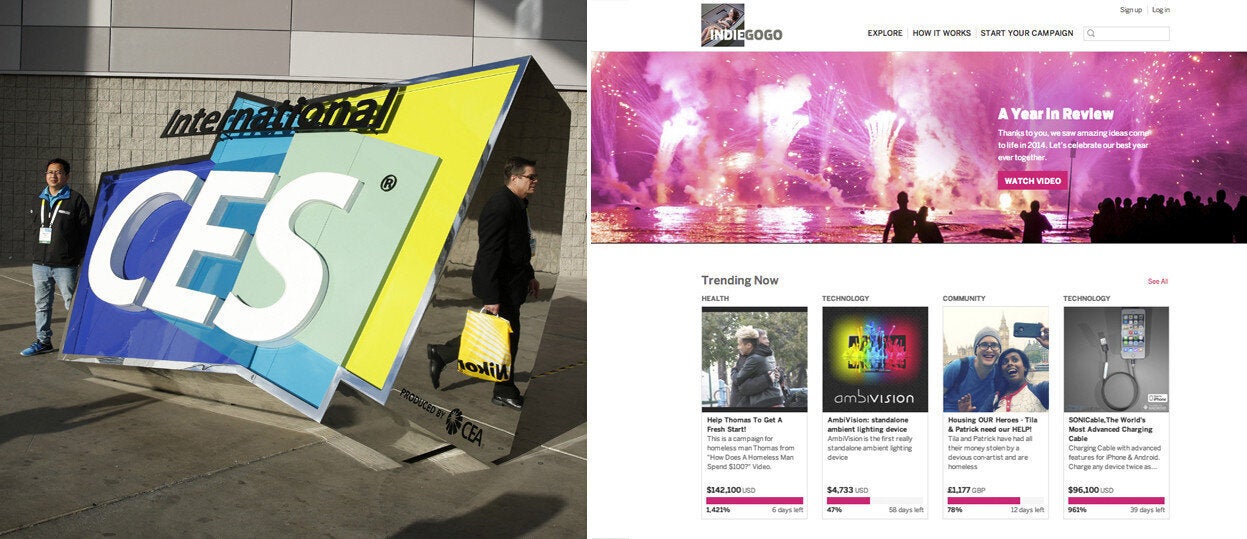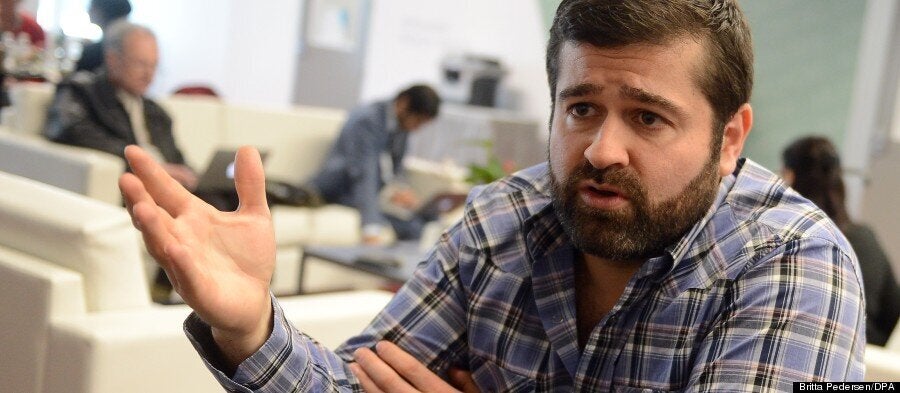Tech Editor Michael Rundle meets IndieGoGo CEO Slava Rubin at CES 2015, and finds out what giant tech shows - and trust - mean in an age of crowdfunding.
If the annual Las Vegas CES tech show is a (mildly horrifying) Christmas for geeks, at IndieGoGo it's Christmas every day.
At least, that's the idea.
IndieGoGo is one of the world's largest crowdfunding networks, and competes with the likes of Kickstarter and Patreon for entrepreneurial projects of every type - whether it's smart watches, robot butlers, GPS trackers or just a neat, new stereo - to raise funds, PR noise and customers on its site.
Founded in 2008, IndieGoGo claims to be the largest international crowdfunding platform, with a presence in 228 countries and territories. It is particularly strong in the UK, thanks to the fact it launched here quicker than Kickstarter, and the fact that it allows pretty much anything (that is legal) - including a brand new ZX Spectrum - to attempt to raise funds on the site.
It's not easy, of course. Not everything gets funded (not even close). And not everything that's funded turns out that great. Or to be straightforwardly believable. But for many small companies, compared to the grim reality of CES - which involves spending thousands of dollars on travel, hotels and samples in order to stand at a small desk in a massive hangar and wait for journalists, retailers and funders to roundly ignore you - it seems like a rather civilised way to launch a tech business.
So maybe our first question for IndieGoGo CEO and co-founder Slava Rubin (who we caught up with at CES 2015, ironically enough) is why IndieGoGo - or at least the 75 IndieGoGo campaigns on the exhibition floor - are even here at all?

Above: crowd-funding versus splashy tech shows. Is it either-or?
Isn't CES just too big for a small company to get enough attention for it to be worth the cost?
"It's very difficult for a small company to purposely plan, in advance, to be a blowout success," Rubin agreed.
"There is just so much money being put in by the massive companies and just so many stories being put out that it's hard to break through the noise."
The dream - and in some cases the reality of crowdfunding is that it only takes a single click for someone to find you, tweet about you and make your idea famous.
But the reality, Rubin said, is that the best way for a company to break through the crowd is still the same on both platforms: be really great.
"The way a small company can break through is have good product, and be able to share it authentically," says Rubin. "If you are able to ride momentum - like an IndieGoGo campaign - you can get the benefit of people preparing to see you and being excited to check you out in person too."
CEA president Gary Shapiro explained to HuffPost that the 'Eureka Zone' at this year's show, where companies paid just $1,000 to attend, was part of that effort.
“We believe that the whole show is for the start-ups… we always have to keep this just so the smallest person with an idea can expose it to journalists, retailers and partners,” he said "You stand out by answering that genuine concern of complexity."
This year (as in 2014) IndieGoGo also took matters into its own hands, building a centralised space for 75 of its campaigns (up from 40 last year, and some already successfully funded) to show off their work, right in the middle of the giant Sands Expo Center - and giving itself a visible presence in the bargain. On show were products like TrackR Bravo - a slim, inexpensive location-aware item tracker, which raised $1.2 million on IndieGoGo - and Geek Pulse, an audio digital-to-analogue converter and headphone amplifier that raised $1.1 million. Others included TouchPico, ChargeAll and The Core. Hundreds more companies at CES are involved in crowdfunding without being specifically on IndieGoGo's stand. The impression overall is of one model supporting the other, not a hard separation between two worlds.
"CES has evolved from big companies just showing off brand new product to now they're going closer and closer to innovation, new companies and hardware devices. With IndieGoGo we're seeing that 24/7. This just is a way of bringing that offline and bringing the personalities together," Rubin said.
As for the trends dominating CES in 2015, Rubin is keeping his mind fairly open.
"The battle for the wrist and the Internet of Things are the mainstream stories. Drones and robots and cars are the trending stories. And I think the story that makes the biggest impact on us really, when we will look back, is the evolution of controlling our own health."
None of these are particularly new ideas, he says - but that's the point. Tech evolves - in small, sometimes crowd-funded increments.
"To get to a true mainstream level like the smartphone takes six to ten years. So here's my question - in 10 years will the Internet of Things exist? I think no question. Will someone be winning the battle for the wrist? No question," he said.
"The press needs to package those things in a way where it's like "oh my gosh, I had no idea". But in a world of so much transparent information it's hard to come up with the gotcha story that no one else knew," he said.Even so, for some IndieGoGo and other sites like it still need to answer a bigger question -- how they can ensure that projects that are funded deliver on their promises (or rather their 'perks') in the first place?
Of course it's inevitable that those companies which face delays and other problems tend to make more news that those that quietly and efficiently deliver on their goals. But on IndieGoGo - as at CES - there is still no guarantee that what you see in a pitch will ever make it to your home.
The most prominent example of this issue in IndieGoGo's case is the Healbe Go, a fitness tracker which raised $1.08 million of funding on IndieGoGo and claims to be able to passively monitor your calorie intake -- but which has since been accused of everything from not quite working as promised to being an outright scam. Healbe actually attended CES in bullish mood - and won faint praise from the BBC for its product - but many of its backers (and by extension IndieGoGo's user base) still feel aggrieved that more was not done earlier to check Healbe could deliver.
IndieGoGo as a business makes no promises that its campaigners will deliver their perks, but it does say it will catch "any and all cases of fraud". But how does IndieGoGo change the perception - and the reality - that it has a trust problem?
"It's important to be open and be transparent," said Rubin. "We have hundreds, thousands of products that have been delivered and funders that are happy. Sometimes there are delays, especially for these first-time entrepreneurs. We provide the tools for that - and if there is ever any questions from a funder we always follow-up with our trust team."
But isn't there an inherent risk when a small, or barely-existent company can raise many times over its expected funding goal -- and then have to deliver thousands more products than it expected?
"The key though is transparency," says Rubin. "For a lot of these hardware devices you hit snags. You lean new things about how to make production run better. You just have to be honest."
"We're not the ones making the decisions on the inside - they get to do what they think is appropriate. But I think it's really important to stay honest and authentic."
In that sense, IndieGoGo's greatest weakness is also its greatest strength. And vice versa.
"A lot of these people, the reason they funded you is they wanted your product, your version of it, to be engaged in that story and be a part of making it happen.
"They could have just gone to Walmart. But they didn't just want to make a transaction and have the same thing as everyone else."